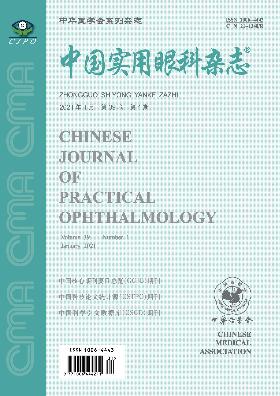Study on the ocular biological effective ultraviolet irradiance and its risk evaluation in different altitude area
引用次数: 0
Abstract
Objective To study on the ocular biological effective ultraviolet irradiance and its risk evaluation in two different altitude areas. Methods A self designed rotating manikin and dual-detector spectrometer were used to monitor the intensity of ocular exposure to UV irradiation under clear skies in Xichang and Shaoxing, of which the intensity of every time point, the average intensity of every hour, the accumulative total dose of every hour and the monitored accumulative total dose in whole day were calculated respectively. Results The diurnal variations of ocular biological effective ultraviolet irradiance and ratio of that to safety limit all exhibited bimodal distribution in Xichang and Shaoxing, the maximum ratio were 23.6 and 13.44, respectively. The accumulative total dose of every hour also exhibited bimodal distribution in two areas, the maximum of Xichang were 80.3 J/m2 and 69.87 J/m2, the ranges of solar elevation angle were 44.4°~55.4° and 54.3°~65.2°; the maximum of Shaoxing were 43.13 J/m2 and 46.75 J/m2, the ranges of solar elevation angle were38.9°~47.2° and 50.7°~60.2°. The monitored accumulative total dose in whole day in Xichang and Shaoxing were 564.7 J/m2 and 396.5 J/m2, respectively. Conclusions The diurnal variations of ocu-lar biological effective ultraviolet irradiance, ratios of that to safety limit and the accumulative total dose of every hour all exhibit bimodal distribution in two different altitude area. Under the same solar elevation angle, all data of Xichang show significant higher than those of Shaoxing. Key words: Altitude; Eye; Biological effective ultraviolet irradiance; Risk evaluation不同海拔地区眼部生物有效紫外线辐照度及其风险评价研究
目的研究不同海拔地区眼部生物有效紫外线辐照度及其风险评价。方法采用自行设计的旋转人体模型和双探测器光谱仪对西昌、绍兴两市晴空条件下眼部紫外线照射强度进行监测,分别计算各时间点照射强度、每小时照射平均强度、每小时照射累积总剂量和全天监测累积总剂量。结果西昌、绍兴地区眼部生物有效紫外线辐照度的日变化及其与安全限值的比值均呈双峰分布,最大比值分别为23.6和13.44。每h累积总剂量在两个地区也呈双峰分布,西昌最大剂量为80.3 J/m2和69.87 J/m2,太阳俯角范围为44.4°~55.4°和54.3°~65.2°;绍兴市的最大值为43.13 J/m2和46.75 J/m2,太阳仰角范围为38.9°~47.2°和50.7°~60.2°。西昌和绍兴监测的全天累计剂量分别为564.7 J/m2和396.5 J/m2。结论不同海拔地区的眼部生物有效紫外线辐照度、与安全限值的比值及每小时累积总剂量的日变化均呈双峰分布。在相同太阳仰角下,西昌的所有数据均显著高于绍兴。关键词:海拔;的眼睛;生物有效紫外辐照度;风险评估
本文章由计算机程序翻译,如有差异,请以英文原文为准。
求助全文
约1分钟内获得全文
求助全文
来源期刊
自引率
0.00%
发文量
9101
期刊介绍:
China Practical Ophthalmology was founded in May 1983. It is supervised by the National Health Commission of the People's Republic of China, sponsored by the Chinese Medical Association and China Medical University, and publicly distributed at home and abroad. It is a national-level excellent core academic journal of comprehensive ophthalmology and a series of journals of the Chinese Medical Association.
China Practical Ophthalmology aims to guide and improve the theoretical level and actual clinical diagnosis and treatment ability of frontline ophthalmologists in my country. It is characterized by close integration with clinical practice, and timely publishes academic articles and scientific research results with high practical value to clinicians, so that readers can understand and use them, improve the theoretical level and diagnosis and treatment ability of ophthalmologists, help and support their innovative development, and is deeply welcomed and loved by ophthalmologists and readers.

 求助内容:
求助内容: 应助结果提醒方式:
应助结果提醒方式:


